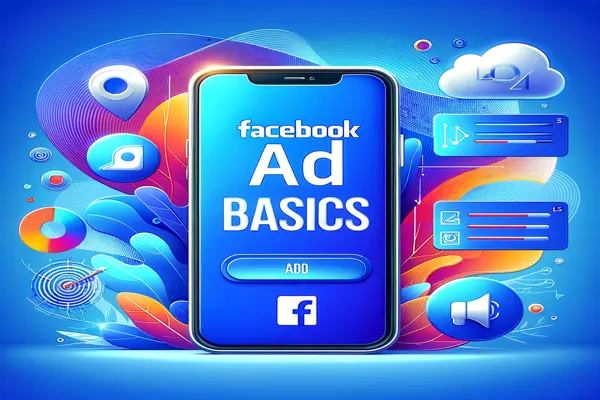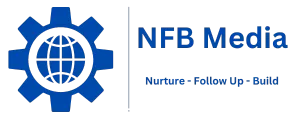
Facebook Ad Basics: A Beginner's Guide to Effective Advertising
Facebook Ad Basics: A Beginner's Guide to Effective Advertising
In today's digital age, social media platforms have become pivotal in connecting businesses with their target audiences. Among these platforms, Facebook stands out with its robust advertising capabilities. Whether you're a small business owner or a marketing professional, understanding the basics of Facebook ads can significantly boost your online presence and drive sales. This article will guide you through the essential steps to get started with Facebook advertising.
Why Facebook Ads?
Facebook boasts over 2.8 billion monthly active users, making it a goldmine for marketers. The platform's advanced targeting options, diverse ad formats, and comprehensive analytics tools make it an ideal choice for businesses looking to expand their reach. Here are some key benefits of using Facebook ads:
Targeted Advertising: Reach specific demographics, interests, and behaviors.
Cost-Effective: Flexible budgeting options to suit any business size.
Measurable Results: Detailed analytics to track performance and ROI.
Versatile Ad Formats: Options for images, videos, carousels, and more.
Setting Up Your Facebook Ad Account
Before you can start creating ads, you need to set up a Facebook Ad Account. Follow these steps to get started:
Create a Facebook Business Page: Your ads will be linked to your business page, so this is a crucial first step.
Go to Facebook Ads Manager: Access the Ads Manager through the drop-down menu on your Facebook homepage.
Set Up Your Payment Method: Add a payment method to fund your ad campaigns.
Configure Your Ad Account Settings: Enter necessary details such as your time zone and currency.
Understanding Facebook Ad Objectives
Facebook offers various ad objectives tailored to different business goals. Selecting the right objective is crucial for the success of your campaign. The main categories include:
Awareness: Objectives like brand awareness and reach are designed to introduce your business to a broader audience.
Consideration: These objectives, including traffic, engagement, app installs, video views, lead generation, and messages, aim to get people to start thinking about your business.
Conversion: Objectives such as conversions, catalog sales, and store traffic are focused on driving actions that directly impact your bottom line.
Defining Your Target Audience
One of Facebook's standout features is its advanced targeting capabilities. To create effective ads, you need to define your target audience precisely. Here’s how you can do it:
Demographics: Age, gender, education, job title, and more.
Location: Target users by country, state, city, or even specific zip codes.
Interests: Based on users' interests, hobbies, and activities.
Behaviors: Purchase behavior, device usage, and other activities.
Custom Audiences: Upload your customer list or target people who have interacted with your business.
Lookalike Audiences: Find new people similar to your existing customers.
Creating Compelling Ad Content
The success of your Facebook ad campaign hinges on the quality of your ad content. Here are some tips for creating compelling ads:
Clear and Concise Headlines: Grab attention with a strong, clear headline.
Engaging Visuals: Use high-quality images or videos that capture interest.
Persuasive Copy: Write concise, benefit-driven copy that resonates with your audience.
Strong Call-to-Action (CTA): Encourage users to take action, such as "Shop Now," "Learn More," or "Sign Up."
Choosing the Right Ad Format
Facebook offers a variety of ad formats to cater to different marketing goals. Here are some popular formats:
Image Ads: Simple and effective, ideal for showcasing products or offers.
Video Ads: Great for storytelling and demonstrating products in action.
Carousel Ads: Feature multiple images or videos in a single ad, each with its own link.
Slideshow Ads: Lightweight videos created from a series of still images.
Collection Ads: A mobile-only format that allows users to discover, browse, and purchase products.
Setting Your Budget and Schedule
Facebook ads allow you to control your spending and schedule with flexibility. Here’s how to manage your budget and schedule:
Budget Types: Choose between a daily budget or a lifetime budget.
Bid Strategy: Decide if you want to bid manually or let Facebook optimize for the best results.
Ad Schedule: Set your ads to run continuously or during specific dates and times.
Monitoring and Analyzing Performance
To ensure your Facebook ads are effective, it's crucial to monitor their performance and make necessary adjustments. Use Facebook Ads Manager to track key metrics such as:
Reach and Impressions: Number of people who saw your ad and how often it was seen.
Clicks and Click-Through Rate (CTR): Number of clicks your ad received and the percentage of people who clicked.
Conversions: Actions taken by users after clicking your ad, such as purchases or sign-ups.
Cost-Per-Click (CPC) and Cost-Per-Conversion: Measure the cost-efficiency of your ads.
Regularly review these metrics to identify what’s working and what needs improvement. Adjust your targeting, ad content, and budget based on performance insights.
Best Practices for Facebook Ads
To maximize the effectiveness of your Facebook ad campaigns, follow these best practices:
Test Multiple Variations: Experiment with different headlines, images, and CTAs to see what resonates best with your audience.
Use A/B Testing: Run split tests to compare different ad elements and optimize for the best performance.
Keep Your Audience Fresh: Regularly update your target audience to avoid ad fatigue.
Leverage Retargeting: Use retargeting to re-engage users who have interacted with your business before.
Stay Updated: Keep up with Facebook’s latest features and algorithm changes to maintain a competitive edge.
Mastering Facebook advertising basics can significantly enhance your digital marketing efforts. By understanding how to set up your ad account, define your target audience, create compelling content, and analyze performance, you'll be well-equipped to run successful campaigns. Remember, the key to effective Facebook advertising is continuous learning and optimization. Start experimenting with your ads today and watch your business grow!

